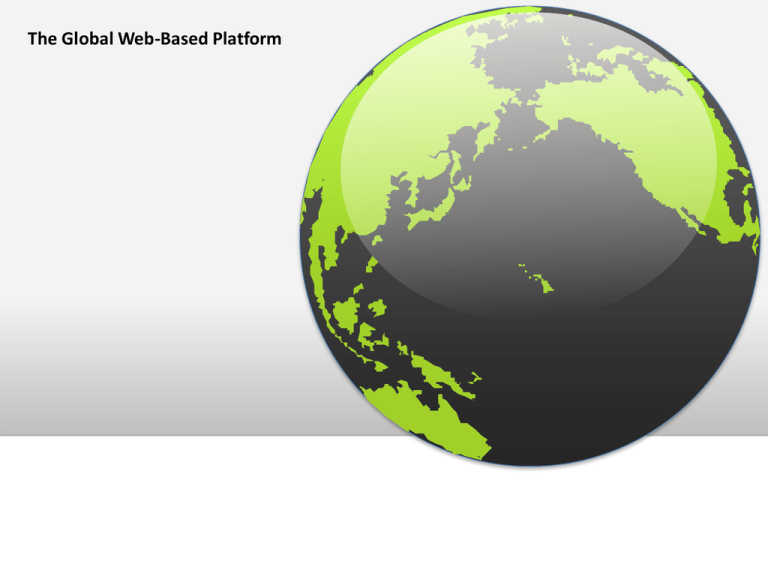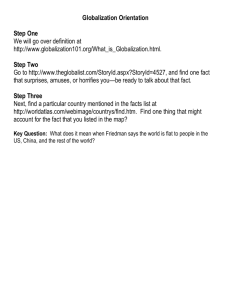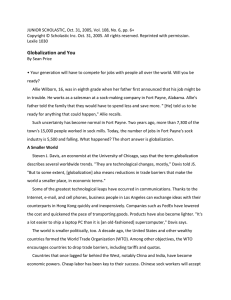Globalization & Web Platform: Friedman's Flatteners
advertisement

The Global Web-Based Platform World Wide Web (Internet) • The World Wide Web platform enables individuals to connect, compute, communicate, collaborate, and compete everywhere and anywhere, anytime and all the time; to access limitless amounts of information, services, and entertainment; to exchange knowledge; and to produce and sell goods and services. • It operates without regard to geography, time, distance, or even language barriers. Globalization • Globalization is the integration and interdependence of economic, social, cultural, and ecological facets of life, enabled by rapid advances in information technology • Thomas Friedman identifies three eras of globalization in his book The World Is Flat Thomas Friedman’s Three Stages of Globalization • Globalization 1.0, lasted from 1492 to 1800 – Force behind globalization during this era was how much muscle, horsepower, wind power, or steam power a country had and could deploy • Globalization 2.0, lasted from 1800 to 2000 – Force behind globalization was multinational companies; companies that had their headquarters in one country but operated in several countries • Globalization 3.0, lasted from 2000 to present – Driven by the convergence of ten forces that Friedman calls “flatteners” – Web-based platform has emerged Friedman’s Ten Flatteners • • • • • Fall of the Berlin Wall on November 9, 1989 – Shifted the world toward free-market economies and away from centrally planned economies – Led to eventual rise of the European Union and early thinking about the world as a single, global market Netscape goes public on August 9, 1995 – Popularized the Internet and the World Wide Web Development of work-flow software – Enabled computer applications to work with one another without human intervention – Enable faster, closer collaboration and coordination among employees, regardless of their location Uploading – Empowered everybody to create content and put it on the Web – Led the transition from a passive approach to content to an active, participatory, collaborative approach Outsourcing – • Offshoring – • Contracting with an outside company to perform a specific function that your company was doing itself and then integrating their work back into your operation; for example, moving customer call centers to India Relocating an entire operation, or just certain tasks, to another country; for example, moving an entire manufacturing operations to China Supply chaining – Technological revolution led to the creation of networks comprised of companies, their suppliers, and their customers, all of whom could collaborate and share information for increased efficiency Friedman’s Ten Flatteners (continued) • • Insourcing – Delegating operations or jobs within a business to another company that specializes in those operations; for example, Dell hires FedEx to “take over” Dell’s logistics process Informing – Your ability to search for information, best illustrated by search engines • The steroids (computing, instant messaging and file sharing, wireless technologies, voice over Internet Protocol, videoconferencing, and computer graphics) – Technologies that amplify the other flatteners – Enable all forms of computing and collaboration to be digital, mobile, and personal Activity • • Read the handout on Zero-Footprint Information Technology at State Street Pair off with a partner and discuss the following: (Take notes in your Journal Log) – Discuss the relationship between State Street’s zero-footprint IT model and the global, Web-based platform – Bring up www.statestreet.com • Go into Thought Leadership The Vision Series – Read article from Technology, Trading and Analytics The Evolving Role of Technology Microsite The Evolving Role of Technology Answer the following question in your Journal Log Do you think State Street is keeping up with technology?





